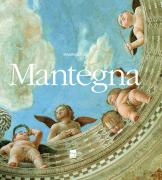Mantegna

After a few centuries of eclipse, in these last fifty years Andrea Mantegna began to resume the place he deserves on the critical horizon. Before of the fundamental exhibition in Mantua in 1961, then that of London in 1992, and those in Padua, Verona and Mantua in 2006, the expressions of contempt for his extraordinary world of marble, and "cold stones acidly veined" (Longhi), for his supposed greatness without a soul, without a moment of warmth or a thrill of passion, were daily recorded. Instead, in the middle of the fifteenth century's Padua, Mantegna seemed to appear as Minerva, born fully formed from the brain of Jupiter, with a disconcerting clarity of ideas for a boy so young : the constant recovery of the classical, which gives a strongly humanistic coloring to his painting, is not the result of an empty and solipsistic rhetoric, but the realization that classical antiquity was the highest moment in the history of mankind, and that we must therefore decipher it in all its keys, to be able to build on it a new man and a better society.
Today Mantegna appears as a giant that, with its constant thrust in understanding through a rational way, and extending this research to the world around them, to discover the causes of things, and not to reason by analogy, clearly laid the foundations of our modernity.
These are the issues that the book aims to explore, while still trying to see the artist as much as possible immersed in the practice of his time of life, to better measure its rise over the others, and his prodigious artistic grandeur.